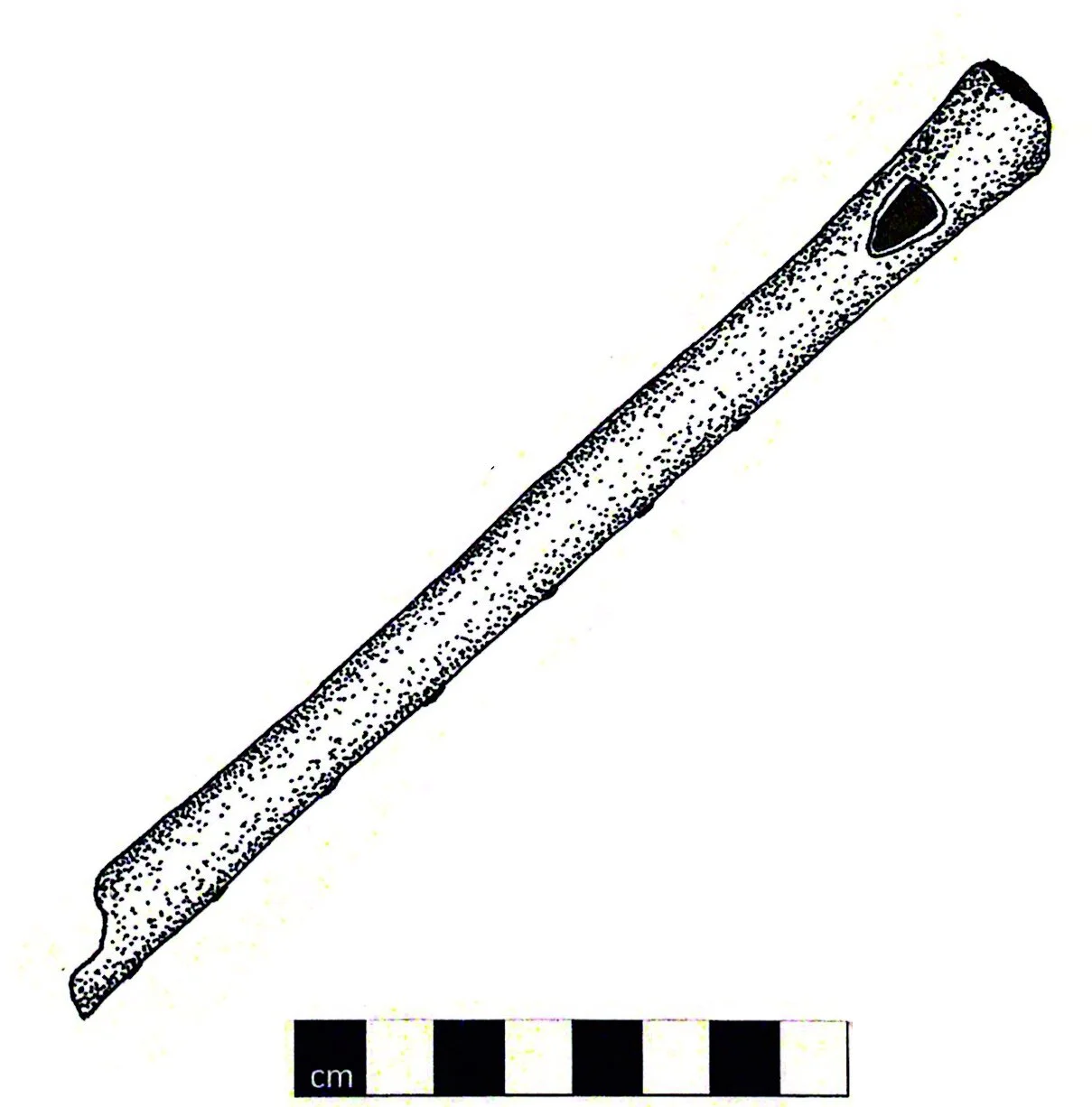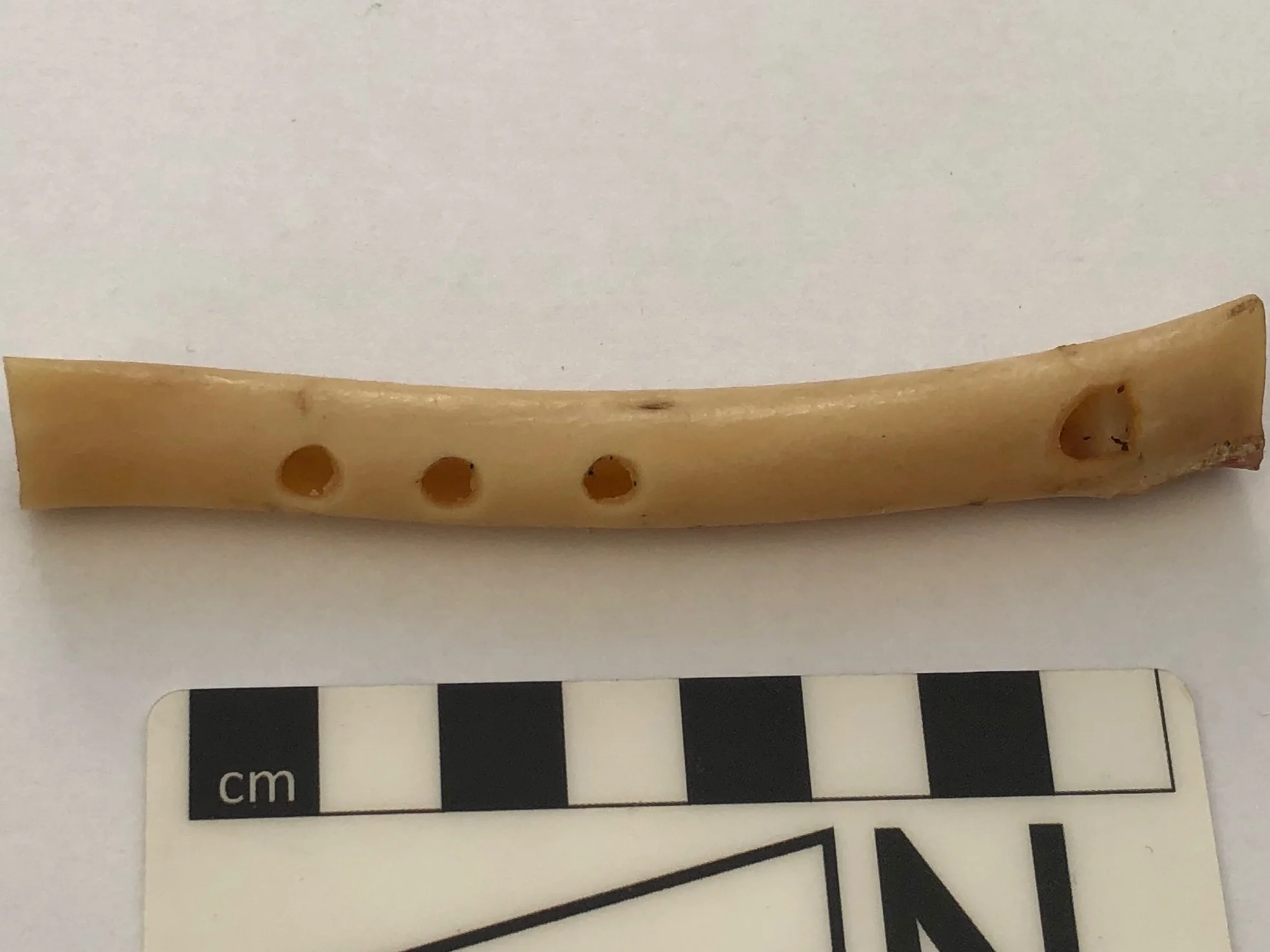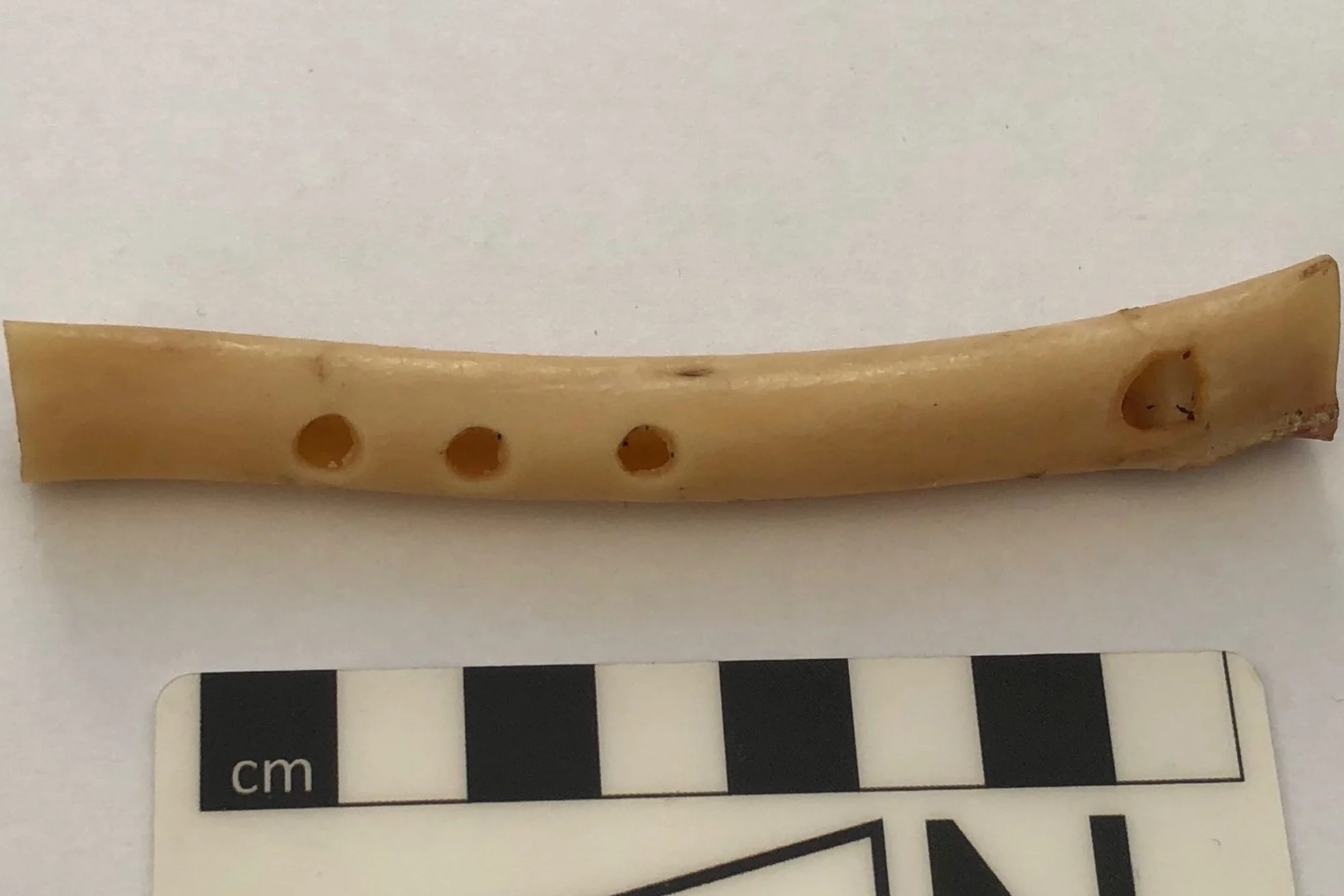Duct Flutes
Duct flutes are voiced in a similar way to the modern recorder. A duct, which could be made from materials such as beeswax, wood or even the tongue, directs the air to hit the edge of the window, sounding the instrument. Experimentation showed the duct flute could be heard up to 500m. From this, the duct flutes may not only have been used for entertainment, but also for practical purposes such as signalling.
Date: 870-1070 AD
Bone: Sheep Tibia (Leg Bone)
Location Found: Flaxengate/Grantham Street, Lincoln
Type of Site: Urban
Decoration on bone pipes is rare, and this is the only currently excavated definite duct flute to significantly represent such a feature. It is possible this example was decorated due to the material being mammal bone which is thicker, and so easier to add decoration to, than bird bone. The decoration may have meant the bone pipe had a special purpose or meaning to the owner, or it may have been that they just decided it would look nice with decoration. While there are no fingerholes on the surviving fragment, the part which is now missing may have contained them, but if it did not, this pipe may have been used like a whistle or to produce multiple pitches by covering and uncovering the end or overblowing (blowing harder which might produce higher pitches (harmonics)).
This bone flute is currently held in The Collection, Lincoln.
Date: 1040-1080 AD
Bone: Swan Ulna (Wing Bone)
Location Found: Billingsgate Market, London
Type of Site: Urban
There are a few examples such as this where the distance between the window and fingerholes (of which half remains at the broken section), is relatively large compared to the other examples. The longer this section the lower the pitch of the bone pipe when no fingerholes are covered. The pitch of the bone pipe when all holes are covered is affected by the total length of the complete fragment.
This bone flute is currently held in the Museum of London Archaeology Collection.
Date: 1100-1150 AD
Bone: Crane Ulna (Wing Bone)
Location Found: Wicken Bonhunt, Essex
Type of Site: Rural/Elite
Despite being slightly after the Anglo-Saxon period, the culture and making of objects such as bone pipes would not have changed overnight. The area of Wicken Bonhunt was a small Middle Saxon settlement but was rebuilt in the 12th century when a large building, used until the 13th century, was constructed.
This bone flute is currently held in the Saffron Walden Museum Collection.
Date: 1067-1071 AD
Bone: Goose Humerus (Wing Bone)
Location Found: Castle Yard, Winchester
Type of Site: Elite
This is one of the few duct flutes excavated from this period in its complete form. The small size of the bone pipe is exemplified by this example which is only 102mm long. Bone pipes were some of the smallest instruments of the period, and examples such as this had a high pitch, as can be heard in the video of the recreated instrument. The recordings in the woodland and open area are slightly different.
This bone flute is currently held in collection of the Winchester Historic Resources Centre.
Recreation of the duct flute found at Castle Yard, Winchester, played in woodland.
Recreation of the duct flute found at Castle Yard, Winchester, played in open countryside.
Date: 1050-1100 AD
Bone: Goose Ulna (Wing Bone)
Location Found: 16-22 Coppergate, York (Anglo-Scandinavian)
Type of Site: Urban
The cut at the top of the window may be a manufacture mark when the window was created, or may be a mark made to lay out where the window should go. Marks found on some of the bone pipes suggests, at least for some, there was a certain level of planning in where to place fingerholes and windows.
This bone flute is currently held in the collection of the York Archaeological Trust.
Date: 1000-1200 AD
Bone: Swan Ulna (Wing Bone)
Location Found: 16-22 Coppergate (York)
Type of Site: Urban
On the ‘back’ of the flute at the same end as the window there are four shallow, roughly circular, cut marks and scrapings. This may have been where the maker first lay out positions for fingerholes before deciding to make the bone pipe the other way round. Whether the decision was random, they forgot they had already made some marks, someone else then started making the bone into a flute, or the placement of the fingerholes was decided not to be correct is unknown.
This bone flute is currently held in the collection of the York Archaeological Trust.
Date: Seventh/Eighth Century
Location Found: Malham, Yorkshire
Bone: Sheep Tibia (Leg Bone)
Type of site: Grave
Originally dated to the iron age and called the oldest bone pipe found in the British Isles, this instrument has more recently been dated to the Saxon period. The only pipe, wooden or bone, from this period to be found in a burial, by the bones of the hand, it would appear to have been an object of personal significance. Additionally, unlike many of the other examples of this period, this instrument features a thumb hole along with two fingerholes on the front and could have been played using one hand leaving the other hand free to be used for another activity, such as hitting a drum like the tabor.
This bone flute is currently held in the collection Leeds Museums and Galleries.
More information about this bone flute can be found in the article: Richard Sermon & John F.J. Todd (2018) The Malham Pipe: A Reassessment of Its Context, Dating and Significance, Northern History, 55:1, 5-43. To see more detail click here.
To continue exploring the wind instruments, click here.







